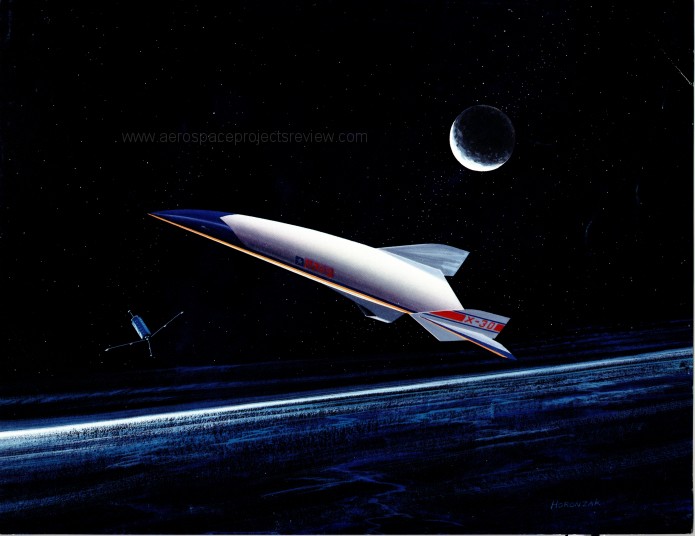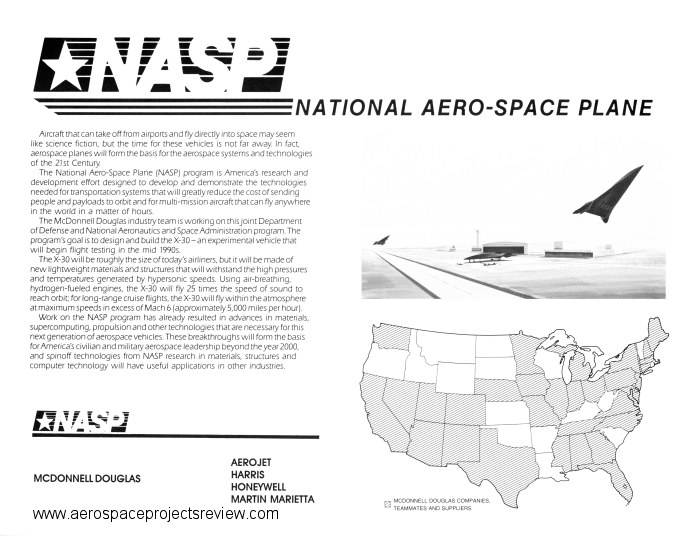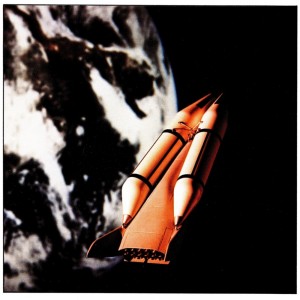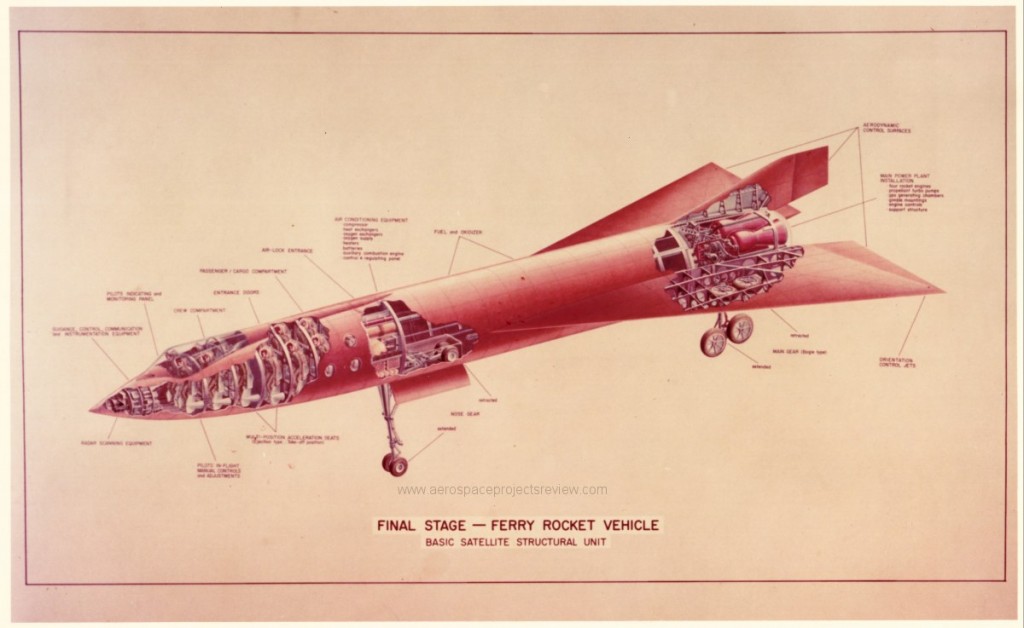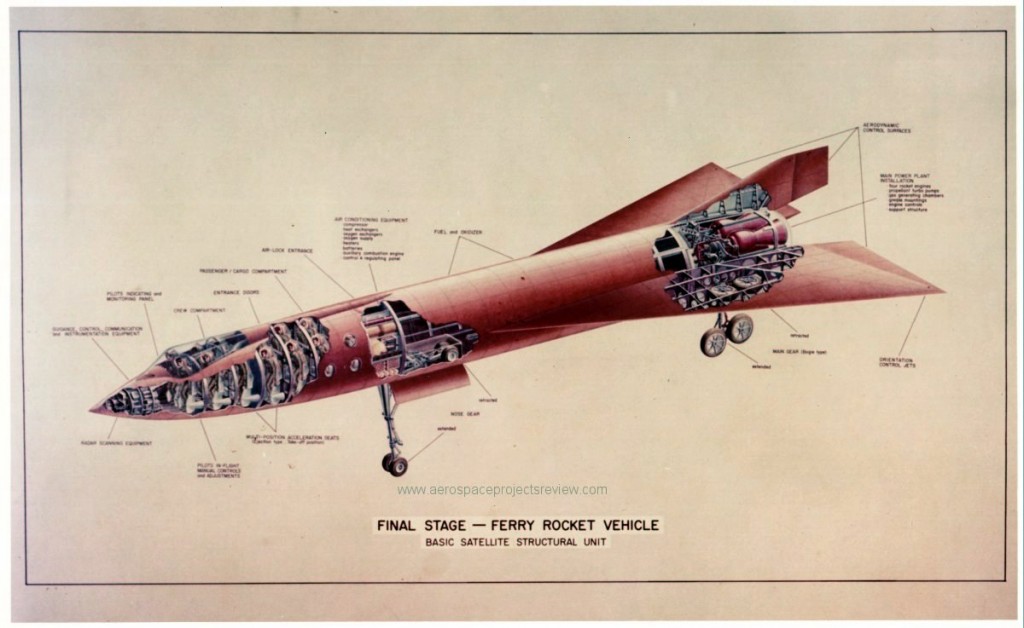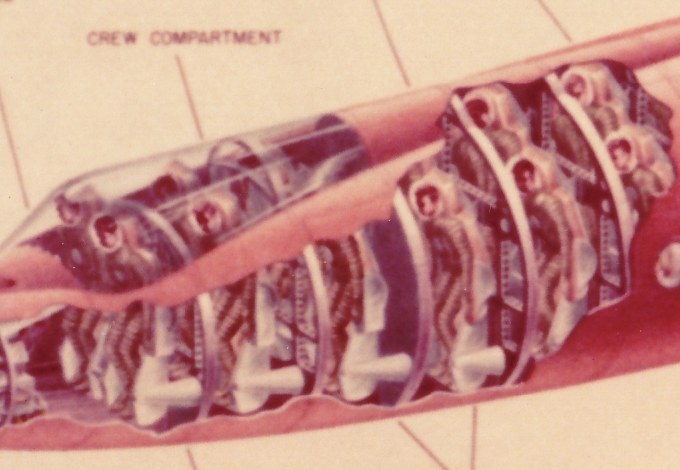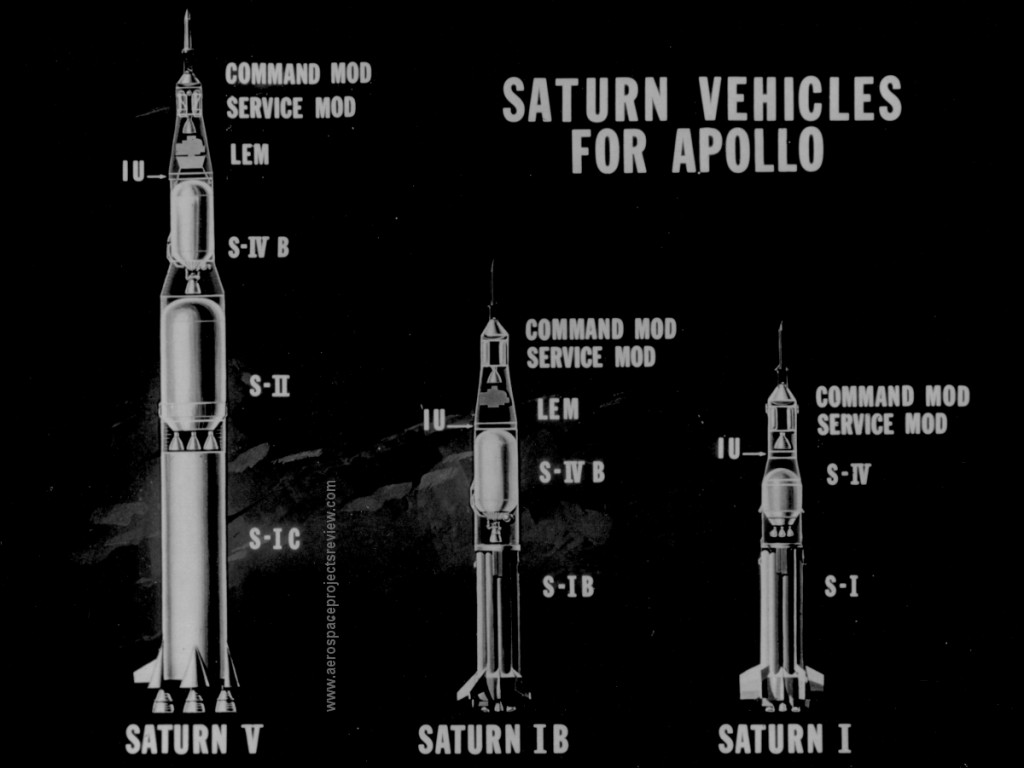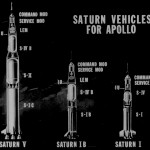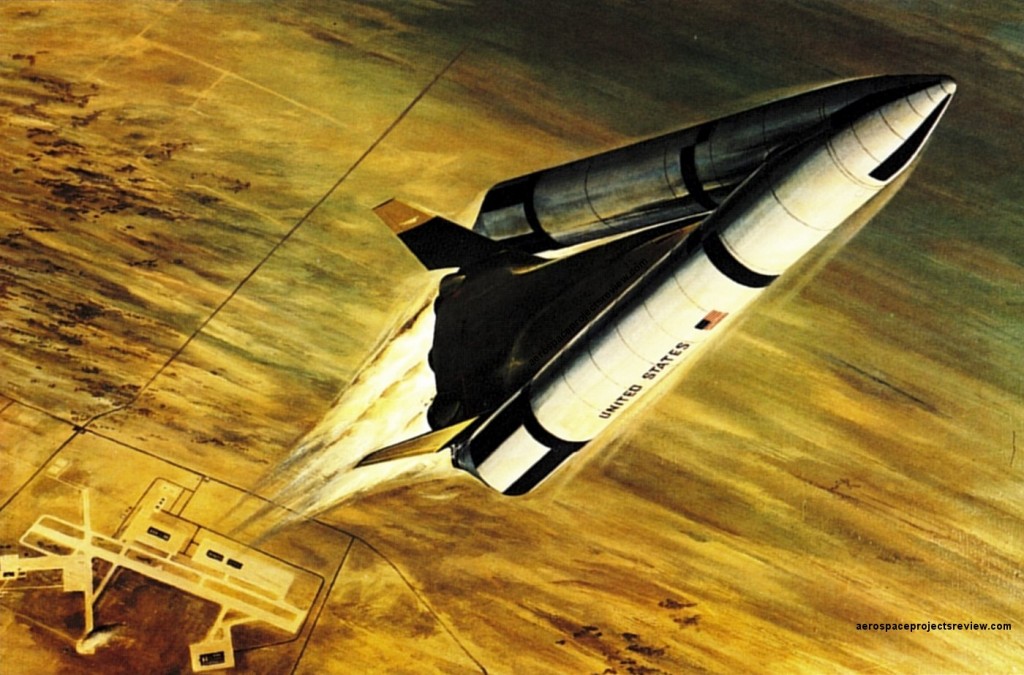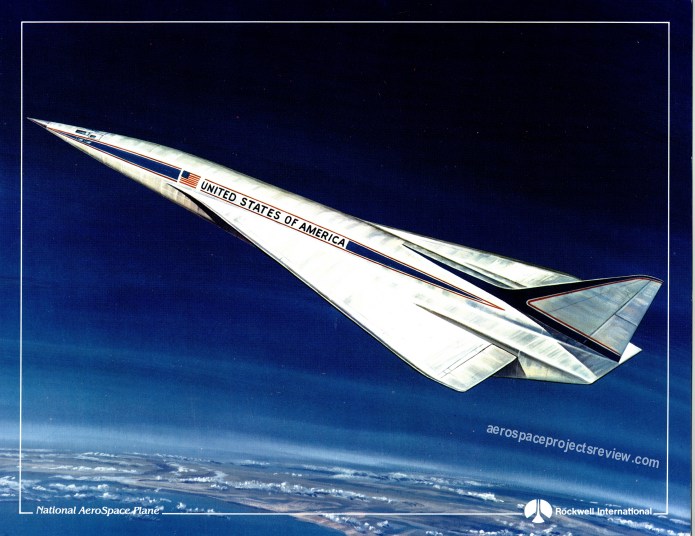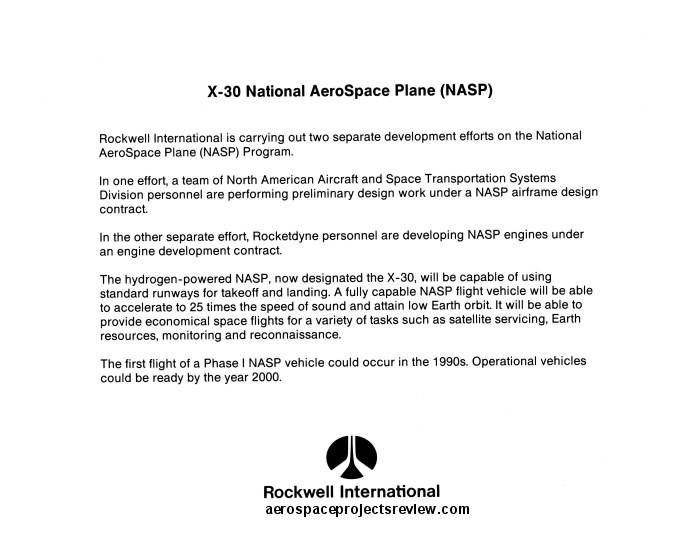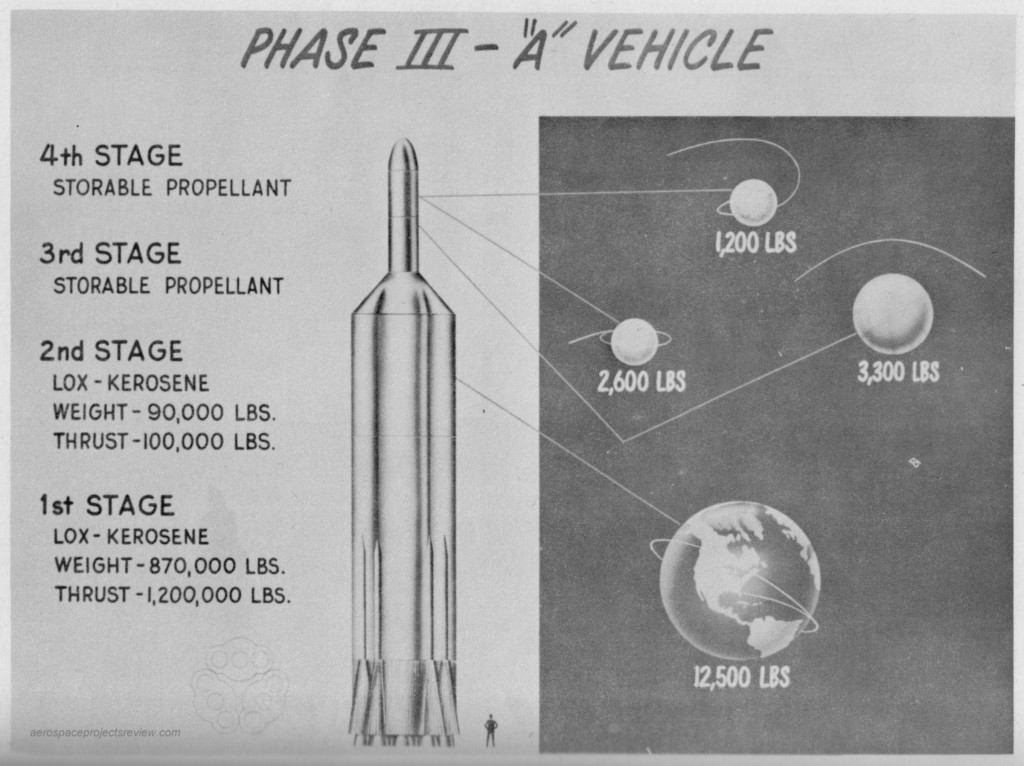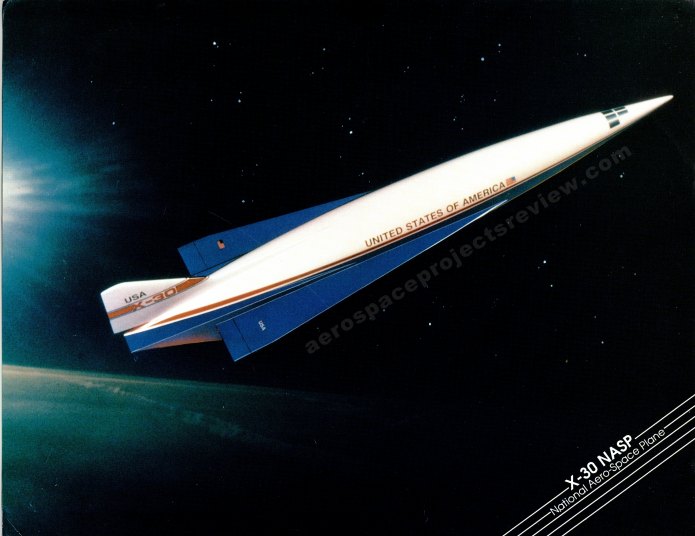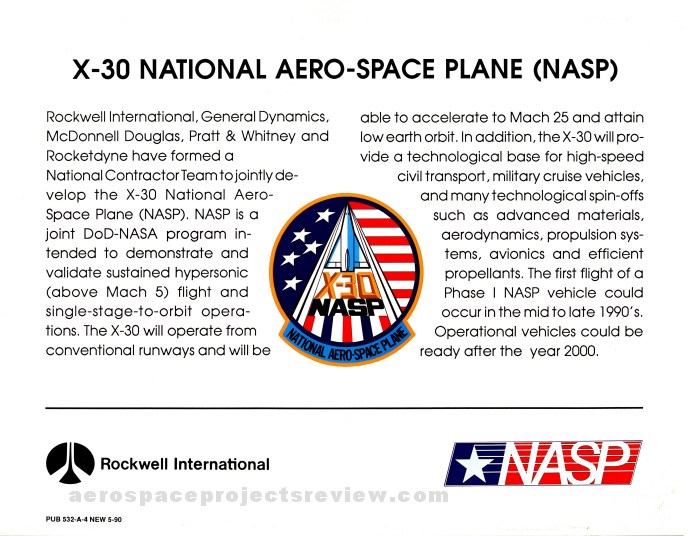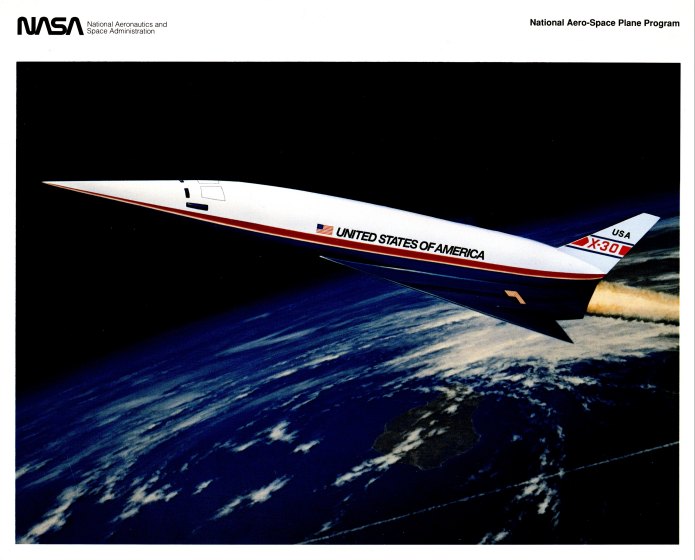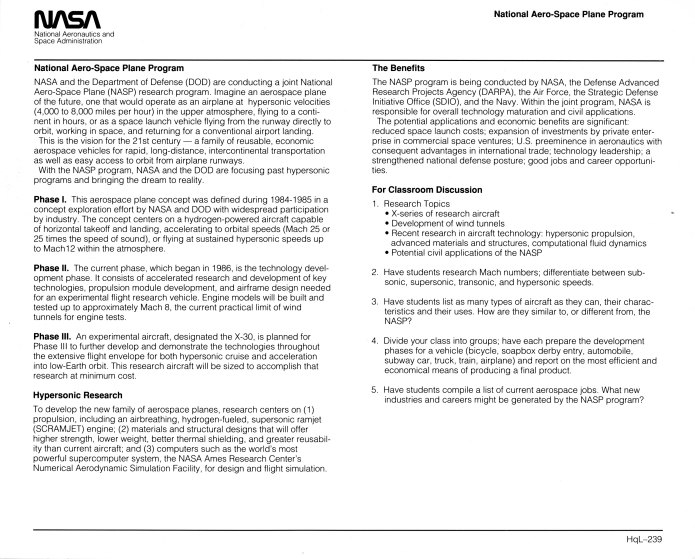This card shows an early (late 1980’s) McDonnell-Douglas design for NASP. A relatively fat lifting body design, this has many similarities to hypothetical “Aurora” hypersonic spyplane designs bandied about at the same time. This is not surprising… this NASP design is similar to any of a number of hypersonic configurations tested in NASA wind tunnels and shown publicly.
Note that the text on the back of the card describes a vehicle somewhat different than what NASP was supposed to be. The claim is made that the scramjets could power the vehicle Mach 25, orbital velocity… of they could allow the vehicle to cruise at Mach 6 for long range hypersonic transport. Early on in the program, the “Orient Express” was touted as a logical result of NASP work, but that quickly faded.
You can download 5.3 and 2.5 megabyte JPG files of the illustrations. The links to the JPG files are HERE and HERE. To access them, you will need to enter a username and password. The username: the first word in the body of the text on page 5 of APR issue V1N1. The password: the first word in the body of the text on page 11 of the same issue. Note that both are case sensitive.
